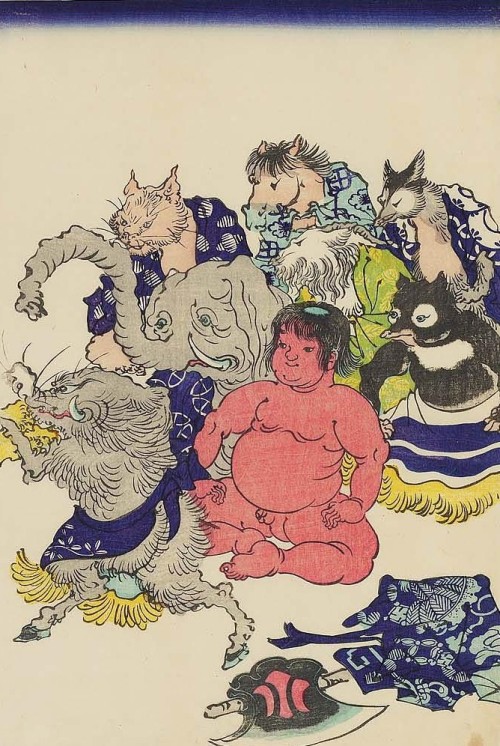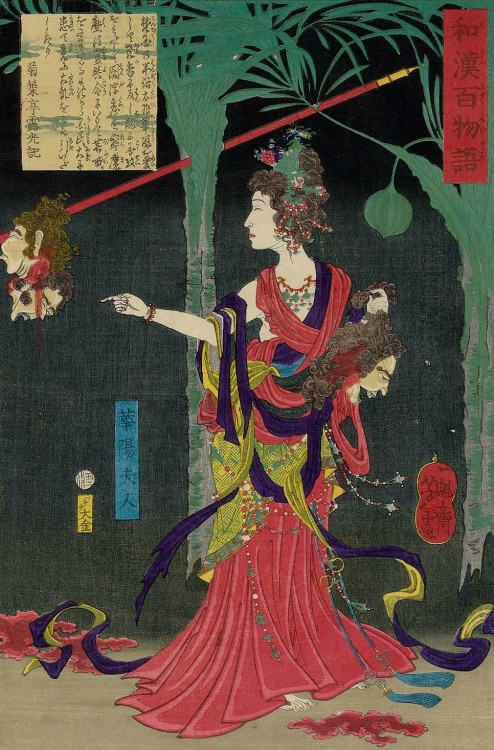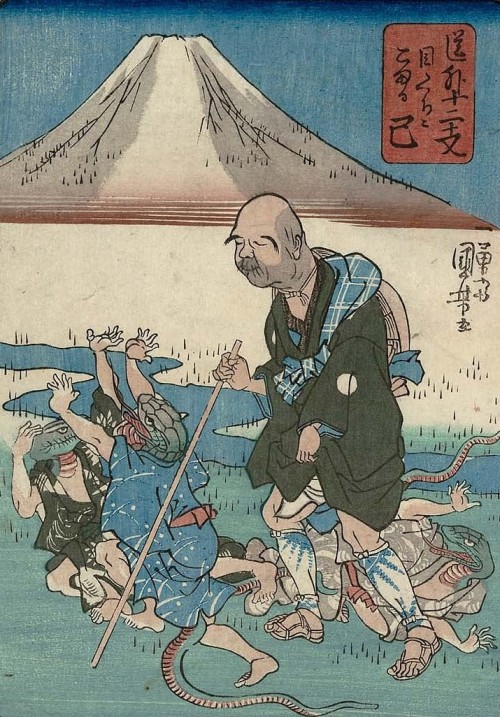#edo era
Fri, 06 May 2022 17:09:55
Lady Huayang, from the series One Hundred Ghost Stories from China and Japan by Tsukioka Yoshitoshi (1865)
Post link
Snakes Disturbed by a Blind Man, from the series Twelve Comical Signs of the Zodiac by Utagawa Kuniyoshi (1841)
Post link
[How to keep warm in Winter during Edo-era], illustration by Sayuri Sasai. Japanese homes were (and still are…) badly insulated, so people had to find ways to keep warm. Common solutions (beside putting on layers and layers of clothing) were to use:
- 褞袍 Dotera (kimono like vest padded with fibers like cotton, silk, wool, etc).You can still find nowadays a remnant of those items in 半纏 hanten (padded haori). It’s worth noting that during most of Edo-era, haori (=short coats) were considered men wear items only.
- 囲炉裏 Irori (sunken hearth), used for cooking and keep warm. Poor country folks with small houses would lay their beds around it to keep warm during the night.
- 行火 Anka (foot/bed warmer), clay heaters using coals which appeared during Muromachi period. Shapes greatly varied over time. Another name for those during Edo was 辻番 tsujiban (”watchers”, from the watch patrolling in streets, especially to prevent tsujigiri murders but also on the look out for fires which were a major hazard in Edo).
Anka were used under 炬燵 kotatsu (table covered by a futon called kotatsugake) or when sleeping under a 夜着 yogi (padded quilt shaped like a kimono).- 火鉢 Hibachi (portable hearth) were the period portable heaters. Many existed, materials and decors depending on the household wealth. Shaped included bowl like 丸火鉢/maruhibashi, or 長火鉢/nagahibashi(wooden box ones, drawn here).
Hibachi were the primary heating system for folks living in nagaya(tiny rowhouses typical of Edo cities) and a major fire source! (see fire hazard above)
Post link






![tanuki-kimono: [How to keep warm in Winter during Edo-era], illustration by Sayuri Sasai. Japanese h tanuki-kimono: [How to keep warm in Winter during Edo-era], illustration by Sayuri Sasai. Japanese h](https://64.media.tumblr.com/c3e229383b9ff58f2d1249080206b5b7/b0d78f93ed9eed20-6d/s500x750/5d2cab8e2f8f1ce31b34fad8cbc8e8e7d4eb3d3a.jpg)